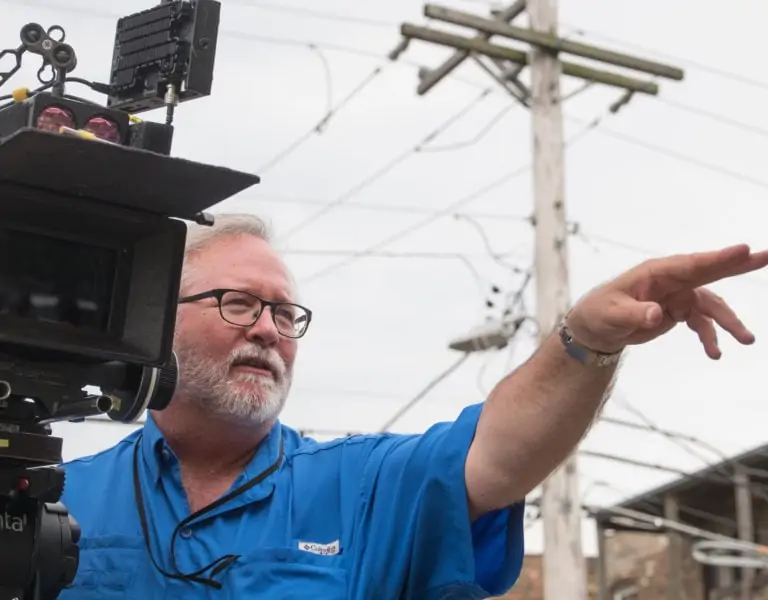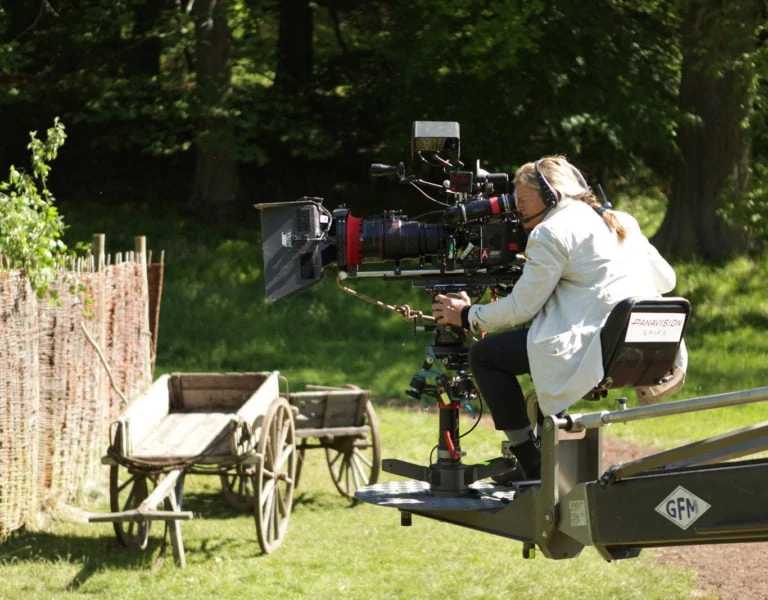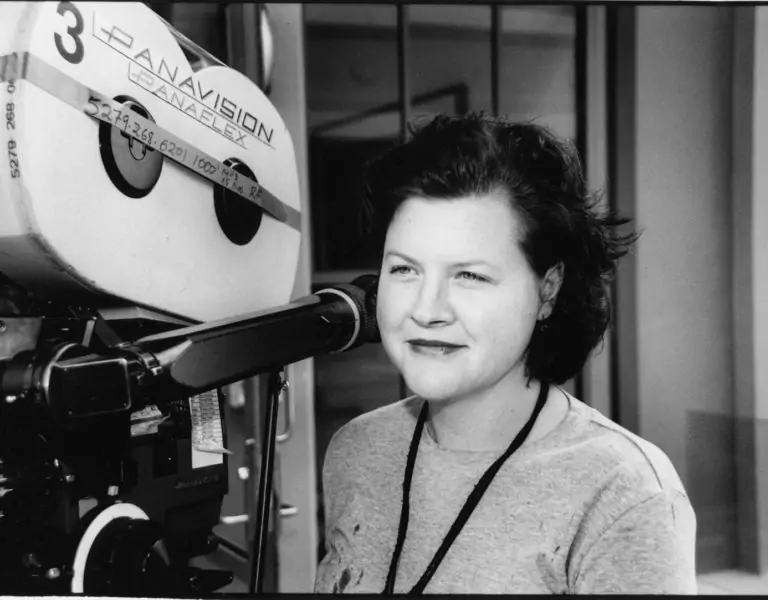JOURNEY OF DISCOVERY
Filmography so far:
Features
Manticore – dir. Carlos Vermut – Prod. B Team & Aqui y Alli Films
TIFF 2022, BFI LFF 2022, Tokyo IFF 2022. Gaudi nomination for Best Cinematography 2022
Tobacco Barns – dir. Rocio Mesa. Prod. La Claqueta & Capricho Films
San Sebastián IFF 2022 – Dunia Ayaso award winner, SXSW 2023 – Audience Award winner
Creatura – dir. Elena Martin. Prod. Lastor Media, Vilaut & Elastika
Cannes Directors’ fortnight 2023 – CineEuropa Award. Gaudi nomination for Best Cinematography 2023
Series
Class – eight episodes Netflix Original series – Showrunner Ashim Ahluwalia. Prod. Bodhi Tree. 2023
Dressed in Blue – fiction series episodes 3 & 4. dir. Claudia Costafreda. Prod. SUMA CONTENT 2023
In post production: The New Years – Fiction series, episode 5 & 7. dir. Rodrigo Sorogoyen. Prod. Caballo Films. For Movistar TV & ARTE. In post production.
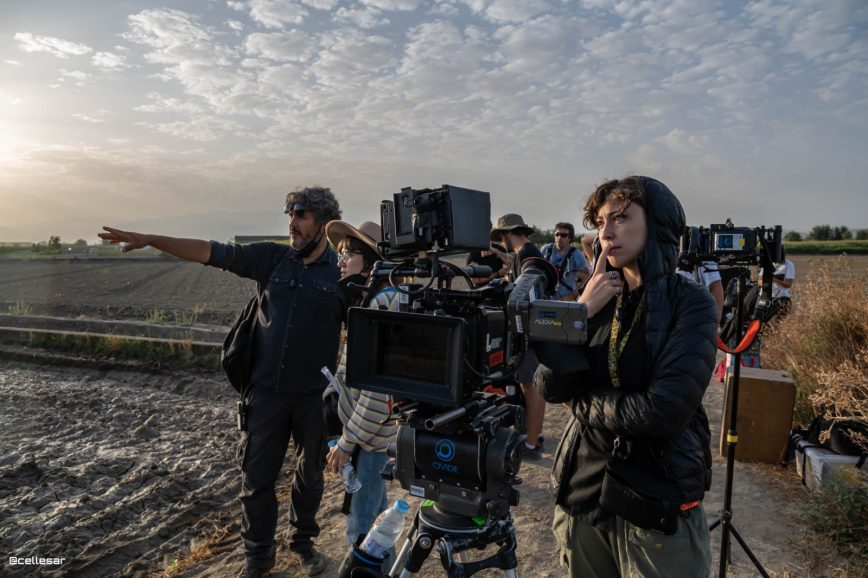
When did you discover you wanted to be a cinematographer and what inspired you to follow this career path?
I believe I realised I wanted to be a DP much earlier than I admitted to myself.
I lived above a Blockbuster store, where I watched countless films. The disappointment of exhausting the weekly titles led me to seek more. With no family ties to this world, I stumbled upon the film industry at 13 by chance, signing up for a random casting call for a small indie feature. Surprisingly, I landed the main role and spent the summer immersed in what felt like a summer camp. Witnessing adults living this as a job was eye-opening.
Following the film, I pursued acting school alongside high school and university but every time on set I was more interested in understanding that role behind the camera.
I juggled all sorts of jobs behind and in front of that camera, I attempted assisting, but found my visual narrative passion flourished quicker through stills photography. Photobooks captivated me, providing a welcome escape from tedious video camera manuals.
Due to the financial crisis in the South of Europe and inspired by the Arab Spring, I pursued photojournalism, living in Beirut, Istanbul, Moldova, Italy and Transnistria. These years were financially precarious but rich in experiences, teaching me independence and resilience.
Despite my solo work, I yearned for the camaraderie of a film set. Acknowledging my fascination with cinematography, I applied for a master’s programme at the NFTS. Surprisingly, I was accepted with a full scholarship, paving my path to London and finally accepting that had always been a dream job.
Where did you learn your craft?
The easiest answer: doing a Masters at the NFTS.
In reality, it was just the structure that held a lot of years of lots of eclectic learning. Self taught photography since teenagehood, freelancing as a photojournalist and sometimes art practice, I delved into stage design, curatorship, and various short courses spanning analogue photography, architecture, robotics, and theatre.
But where I have learnt the most has been listening to people in the industry, whether on set, at talks, at a bar, formally or informally, asking them directly questions, listening to podcasts, reading magazines like this or any other filmmaking book I could get around.
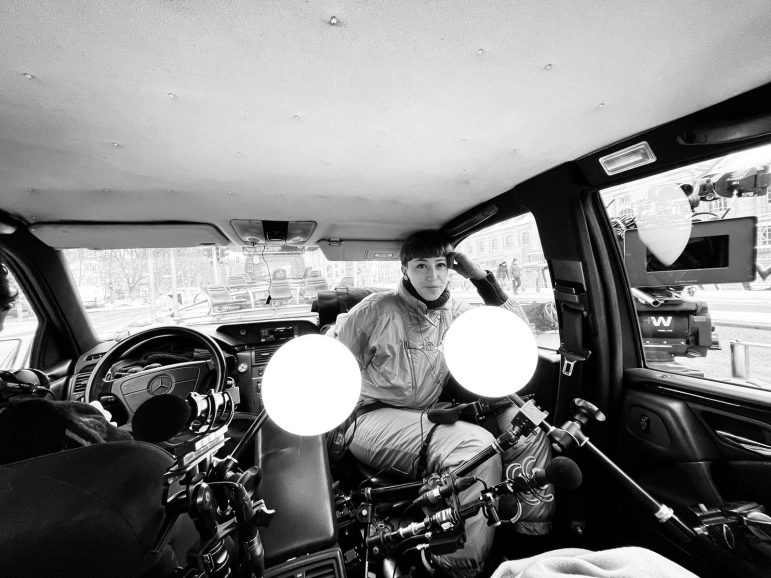
What are your favourite films, and what makes them stand out to you?
Too many, the most difficult question ever. I would say this list probably swings a lot depending on what I am working on or what I have been remembering the most.
Loves of the Bridge – Dir. Leo Carrax, DP: Jean-Yves Escoffier AFC. For being a film with a log line that wouldn’t excite me at all, but the way it is done is a very inspiring one.
The Passenger – Michelangelo Antonioni, DP: Luciano Tovoli ASC AIC. A masterpiece in visual storytelling, one of the most incredible shot designs in the history of filmmaking.
Lazzaro Felice – Dir. Alice Rohrwacher, DP Hélène Louvart AFC. As Rocio Mesa, a director I have worked with, says, Alice, Helen and Lazaro are the Holy Trinity. How can Hélène make so many good movies one after the other, incredible work and incredible taste at choosing the right projects.
The Holy Girl – DP Félix Monti ADF and The Swamp – DP Hugo Colace ADF – Dir. Lucia Martel Because it’s a master class in framing and out of frame storytelling. I remember watching The Swamp and feeling that humid heat all over my body, my skin sticking and I was seated in a cinema in winter in Europe.
The Conformist – Dir. Bernardo Bertolucci. Dop. Vittorio Storaro ASC, AIC. Difficult not to mention, because it redefined the craft.
The Cranes are Flying – Dir. Mijaíl Kalatózov, DP Sergei Urusevsky. When living in Turkey, I was shown incredible Soviet fields like this one that changed my way of understanding where innovation in cinematography was coming from.
The Return – Dir. Andrey Zvyagintsev, DP Mikhail Krichman. Because every frame contains so much.
La Haine – Dir. Mathieu Kassovitz, DP Pierre Aïm AFC. I had forgotten this film for a while till I recently realised how influential it had been for me.
Hunger – Dir. Steven McQueen, DP Sean Bobbitt BSC. I think I really understood I wanted to be a cinematographer when I saw this film.
Magnolia – Dir. Paul Thomas Anderson, DP Robert Elswit ASC. Incredible coverage and shot designs.
Beanpole – Dir. Kantemir Balagov, DP Ksenia Sereda. One of my favourite films of recent times, I think it’s an instant classic. So strong visual storytelling, use of colour and framing that it deserves all my respect.
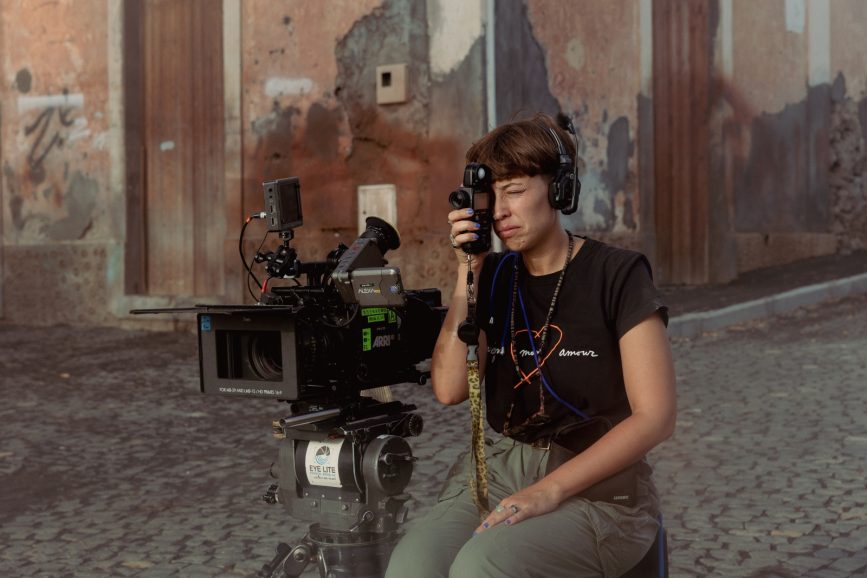
Who in the film world inspires you?
Robbie Ryan BSC ISC, not just because he is talented and keeps making amazing films, but because of his constant curiosity, never ending enthusiasm, and generosity to newcomers. I would love to get to his level of experience with the same smile and positive energy towards every project. And the incredible mind of Billy Williams OBE BSC at 94.
What’s the most useful advice you’ve received and from whom?
‘If you don’t know about something, call whoever is an expert on that field and get them to work in your team’ Something I was told by both Oliver Stapleton BSC and Stuart Harris BSC while at the NFTS.
What advice would you give someone considering becoming a cinematographer?
Stay curious, exploring every aspect, role, and technique available. Don’t hesitate to reach out and ask questions, even when work is scarce. While many may not respond due to their busy schedules, even one reply can spark inspiration. Learn about lighting by observing everyday spaces and studying films, music videos, exhibitions, and photo books, even those outside your usual preferences.
Remember, there’s no singular path to success; follow your taste, desires, and intuition. Invest in therapy, even if it seems unaffordable at times. It’s one of the best and most sustainable choices in the long run. Therapy enables you to handle your issues privately, preventing them from affecting your work relationships. It helps maintain clarity and identify whether something is my own issue to work through or something someone else is projecting onto me.
What have been your greatest triumphs and disasters on set?
One of my greatest triumphs on set is when everything clicks, and we discover an even better idea to convey what we’ve envisioned during prep. It’s when I’m looking through the camera, capturing the movement, lighting, coverage, and texture we’ve discussed with the director, and the film truly comes to life. That moment when we exchange glances, knowing we’re both on the same page, is always the best feeling ever.
Disaster – While shooting Class, a Netflix show I shot in India, we faced a daunting challenge: an intricate intimate scene between two main characters, a queer couple, set on a rooftop in Old Delhi. Unlike cities with vibrant neon-lit skylines, Old Delhi’s rooftops lacked such modern illumination. Nighttime filming was essential for continuity, ruling out dusk or dawn settings.
I designed an extensive lighting spanning multiple rooftops, not being able to use cherry pickers or large machinery due to the narrow streets. We had a large light sign from the art department as a base and every battery-powered light available to us was placed on neighbouring terraces or windows. The scale of the scene, including a wide shot showcasing three floors of courtyards, demanded meticulous planning and execution.
As we waited for sunset to be able to see what my gaffer Sajid Shaikh and I had created, the line producer informed us of an immediate lockdown and curfew announced by the government, effective from sunset that same day. We had to wrap up immediately and head back to the hotel to avoid getting into trouble. I was never able to see the scene lit.
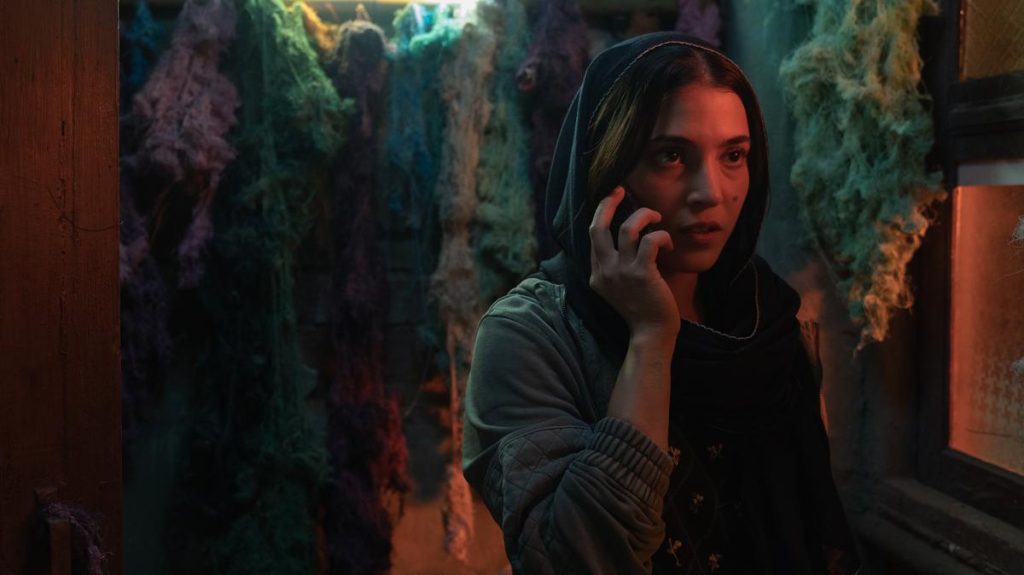
What lights your fire outside of work?
Watching films counts, right?
Exhibitions of all kinds of arts, history podcasts, photo books, a good home cooked meal around a table full of friends and good conversations. And if it can be by the Mediterranean even better.
What has been the biggest challenge in your career and how did you overcome it?
Probably the social class I was born in. It took me years to understand that a lot of the struggles I face came from not being able to have a more reliable financial background around me. I come from a migrant family, I’ve myself become a migrant multiple times, I’ve been working in various jobs since I was the legal age to work and I have achieved a higher education thanks to scholarships. These support structures and welfare systems are vital for providing opportunities to those who don’t have them from birth.
This minority within our industry is even more challenging to discuss than other issues like gender, race, or sexual orientation. While I’m grateful that these topics have been included in conversations about diversity, class is often overlooked, especially in the UK, where many opportunities are concentrated in one of the world’s most expensive cities.
What piece of kit could you not live without?
As much as I would love to be creative, my light metre and my iPad are the ones with me on every single project.
Which film would you love to have shot?
I would have loved to shoot Lovers of the Bridge by Leos Carax, or in more recent times Abou Leila by Amin Sidi-Boumédiène, but Kanamé Onoyama AFC did such an incredible job on that film that I think he really nailed it.
Which productions are you most proud to have lensed, and why?
Of all the long-form projects I’ve worked on so far — four features and three series — they all feel like my children. Each one required immense energy, effort, and inspiration to bring to fruition, and in one way or another, I feel proud of all of them. Each project presented unique challenges that allowed me to develop new skills, ultimately making me a better DOP. Even on the most difficult and demanding days, looking back, I can appreciate the invaluable experience gained.
But If I had to answer, Creatura, directed by Elena Martin and premiered in Cannes Directors Fortnight 2023, feels like we managed to achieve a lot of elements that were so complicated on paper. We managed to achieve many complex elements that seemed daunting on paper. Working with a director who also portrays the protagonist of the film posed its own challenges, requiring a significant amount of time each day on set for prosthetic makeup. The film explores the intricate events that shape someone’s sexuality across different periods of their life. We wanted to make a film that would feel like a therapy session but visually would borrow a lot of elements from genre films, creating tension and suspense around someones discoveries of their own past.
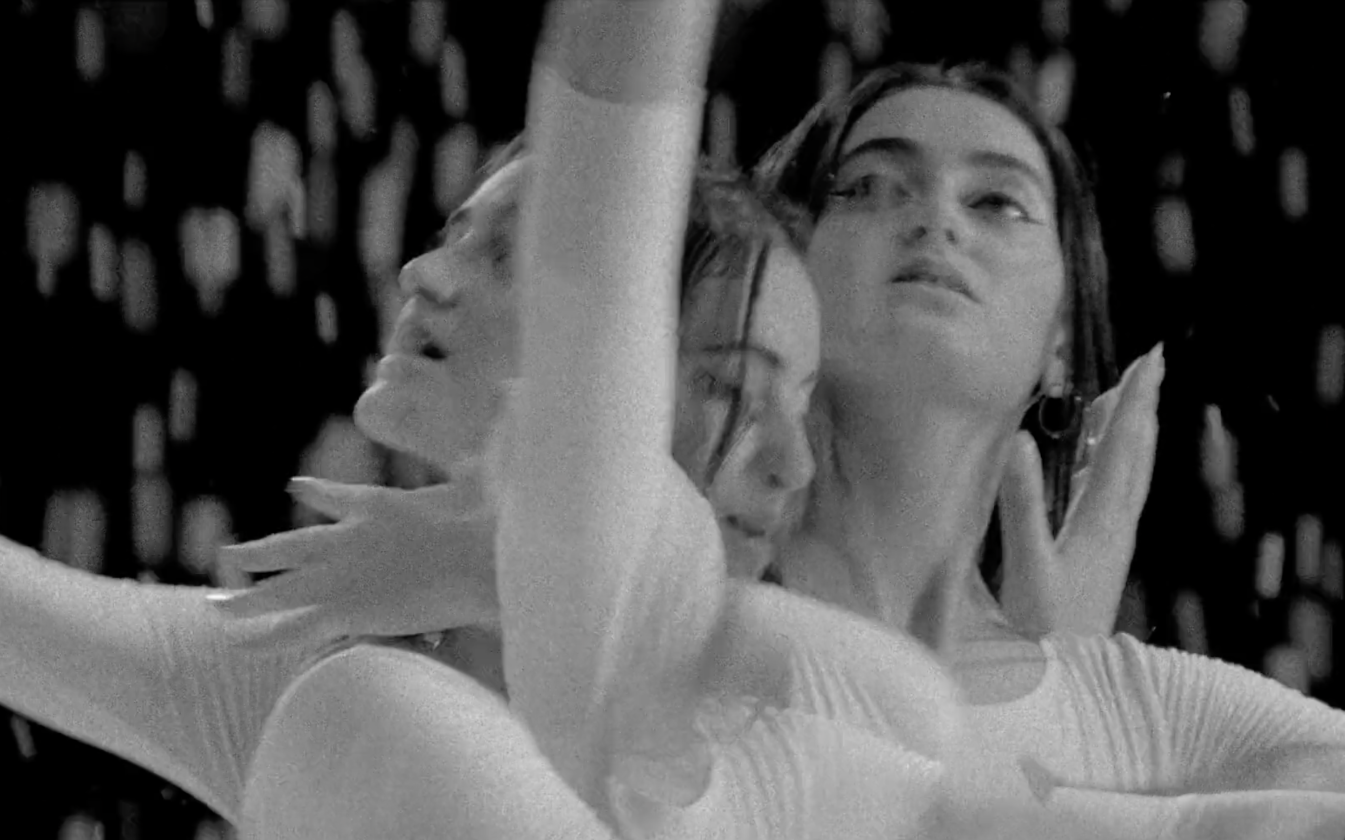
What’s the best and worst thing about your job?
At times, it seems as though you’re alone in facing uncertainties about your career and future projects. Questions about what’s next, how the next project will unfold, when you would be next on set, and how to tackle technical or creative challenges on that particular project can be overwhelming. Managing the politics on set and staying connected to what improves your work, what got you get that job, can also become obscured amid the stress of bringing a film to life.
As you begin to open up with colleagues or delve into honest interviews with industry professionals, you come to realise that these challenging moments are far more prevalent among the majority of us than you might expect. It’s like the job just comes with these rollercoaster phases of feeling totally lost and unsure, mixed in with the excitement of snagging that dream gig and feeling yourself grow and learn.
How would you best describe your approach to cinematography?
Whether it is a feature script or a commercial one, what I am looking for it’s how to contain what we want to talk about in a frame. And how to make that frame, that shot, the most interesting, inspiring and intriguing one possible. And make the process of finding the best cinematography for that story fun!
What are your aspirations for the future?
To always be gifted with a good script which wants to narrate, move you, make you think through images. Directors who want to challenge and thrive in the visual language.
I know this might not always be possible, but I also think that to get to the peak of wherever you want to go, you sometimes need to look at the clouds.
I live in London and I have been shooting long form abroad for the last few years. It’s given me a lot of experience to work with different crews, learn new vocabulary, and draw inspiration from various cinematic cultures. But I am really craving to do a project at home, to be able to also shoot in London more often.
I’ve been fortunate in the long form; my feature debut materialised earlier and under more favourable circumstances than I ever dared to dream. And since then the ball kept rolling, but I am also wanting to go back and do more commercials in between. I also enjoy growing in that aesthetic, working with different tools and the quicker turnarounds in the short form.
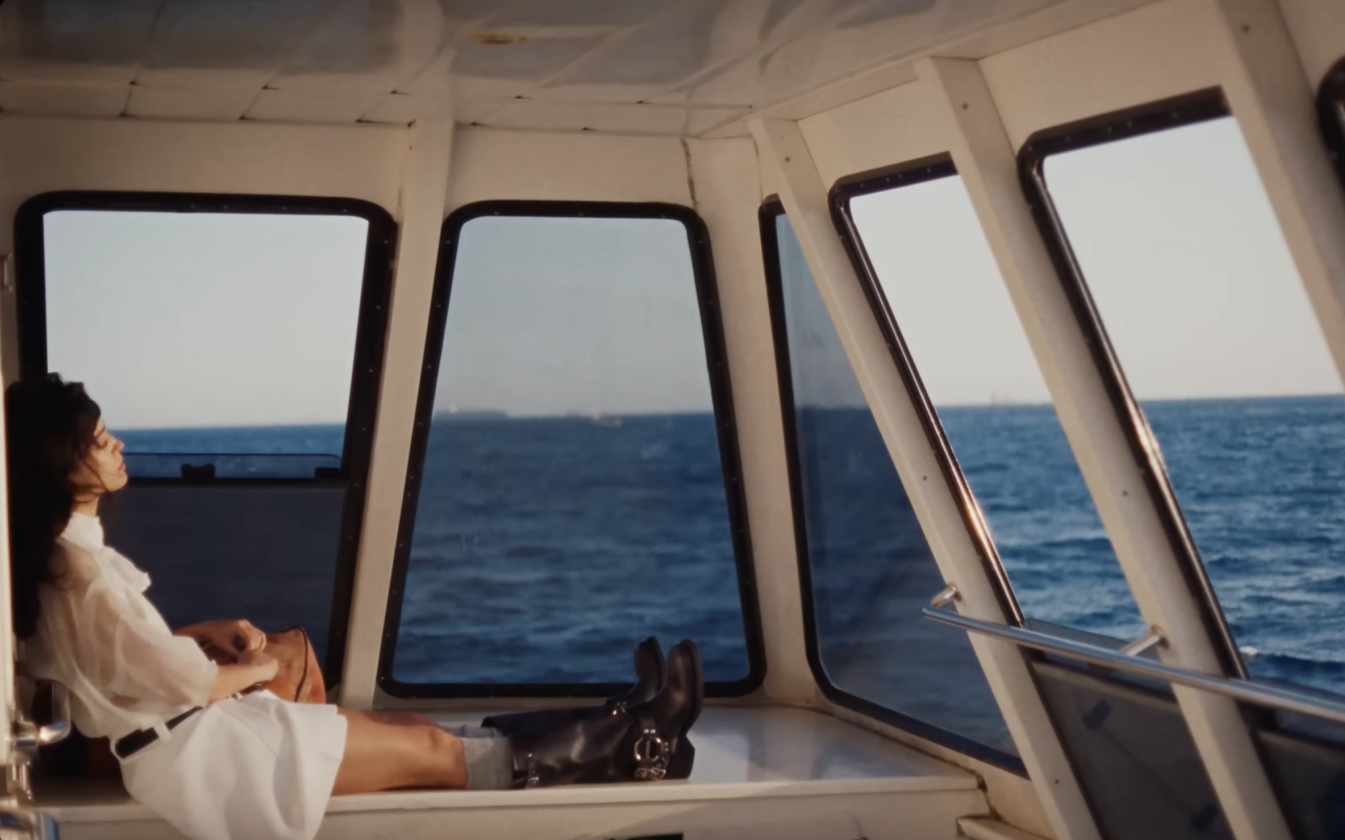
What do you think are the industry’s biggest challenges?
Working hours. I recently attended an event focused on wellbeing in the industry, and I was surprised by the lack of reference to the actual number of hours we work every day. These hours are unheard of for decades in other industries that are equally expensive and challenging.
There are many important conversations happening at the moment regarding toxic attitudes on set, including racist, sexist, and homophobic behaviour that many of us have experienced. This progress is incredible and happening so rapidly.
Apart from this, the majority of uncomfortable moments, comments, and attitudes I have witnessed at work have typically come from people who were exhausted and frustrated because they couldn’t be at home with their kids, plan to visit friends, have a date or time by themselves after working 12 hours. This is a problem we need to address immediately.
I know filmmaking is expensive, and we’ve designed shooting schedules according to being the most efficient possible and the industry seems to be shrinking in the last year and changing a lot due to the exhibition system redefining itself. But we need to start thinking about structures that allow us to work less hours.
